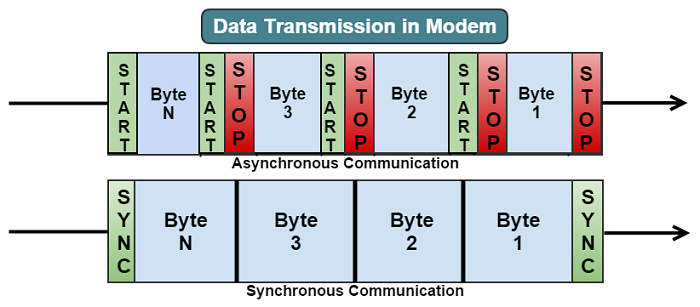What is a Modem?
The First Modem came into existence was Dataphone which was released in 1960 by AT&T after that a new modem released 80-130A in 1977 which became more popular and common for home users invented by Dennis Hayes. Modem is short for MODulator/DEModulator.
DEFINITION: Modem is a hardware device and the primary function it serve is to send and receive information that done on telephone lines, Sending information is in the form of digital data whereas receiving information are analog signals. This is also referred to known as asynchronous device which means data is transmitted into small packets of fragmentary way, while a packet is received by the system then it reassembles that packet into the form in which computer can use it.
Modem Hardware
When computers are too far apart to joined via standard computer cable then modem which is also known as data communication equipment enables the communication between them. Which make it possible for computers to communicate over telephone lines. Modem hardware share the following characteristics:
- A serial (RS-232) communications interface
- An RJ-11 telephone-line interface (a four-wire telephone plug)
Modem Performance
Speed of modem is from 300 to 56,000 bps i.e. bits per second. StandardV.92 as the last dial-up standard which is providing downstream data rate of 56kbps. A high speed cable modem supporting 56 Mbps is an example of Modem Performance.
Types of Modems
Asynchronous Communication
Asynchronous Communication which is also known as async is the commonly used form of connectivity in today’s world. It take each character, letter, number, or symbol as a bit of string and all of theses strings separated from the other string having start and stop bit at the beginning and the end of bit. Sequence of start and stop bit agreed by both sending and receiving devices. The receiving computer marked as start and stop bit as a schedule its timing function so that it can differentiate it from the next byte of data. There is no clock to coordinate with transmission as well as communication is also not synchronized, sending computer sends and receiving computer receives data. So the async communication consist data traffic control and coordination and that depends on the type of transmission whether parity is used or something else.
Improving Transmission performance that depends on two factors. Signaling the speed which determine how fast the bits are encoded on communication channel and the second one is by measuring Throughput which is the amount of useful information that is going to across the channel.
Synchronous Communication
This communication rely on the timing scheme and coordinated between two devices to separate groups of bits and transmit them in blocks that are known as frames. This communication way doesn’t require start and stop bits, special characters are used to begin the synchronization and they check its accuracy periodically. Transmission done when a new frame arrives and stop when it whole transmitted at the end. This is used in all digital and network communication without worrying about to convert from one form to another. Example if you were using digital lines to connect to remote computers, you prefer to use synchronous modems rather than asynchronous because of their higher cost and complexity kept synchronous modems is preferable.
How Synchronous differs from asynchronous: Data format in blocks by adding control information and check information periodically by providing error control.

There are some of the primary protocol that are used in synchronous communication.
- Synchronous Data Link Control(SDLC)
- High-Level Data Link Control
- Binary Synchronous Communication Protocol which is also known as bisync


